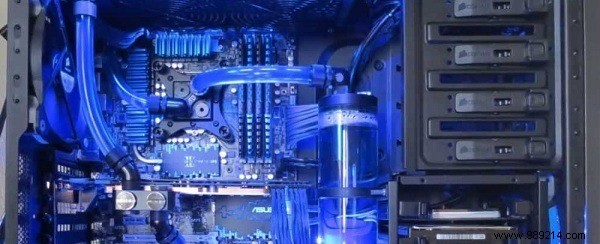In the 1990s, the vast majority of computers only needed to cool their processors with a simple fan that fit in the palm of a human hand. This is still how we cool most of our computers in the 21st century, except that the fans are now more efficient and bigger.
The problem with the hardware is that the electrical impedance creates a kind of "friction" which results in excessive amounts of heat. As hardware becomes more powerful, it must dissipate more of this heat. Most big-budget PC enthusiasts have built computers by hand or using simple kits that include water cooling, a more efficient method of removing heat from several hardware components. But what if we had a cooling system that worked much like our own vascular systems? Would it be more efficient?

In 2013, IBM introduced its invention of a computer that runs on "blood". The concept is quite simple:distribute energy to the system and evacuate its heat. The electrolyte is conductive, which allows the energy to be routed wherever it is needed. At the same time, it can remove the heat from the computer to a pump which cools the liquid again. It looks like a glorified water cooler until we add another (very important) detail:it has capillaries that can spread out into smaller areas.
The human body is good at maintaining its temperature not only because of the presence of sweat glands, but also because our blood seems to be everywhere. When you make a cut, no matter where it is on your body, the blood somehow manages to come out of the surface. This is because there are millions and millions of capillaries scattered all around the body. Considering that the human brain consumes about 20 percent of the body's resting metabolic rate, it produces a lot of heat for just one organ. Blood entering the brain helps dissipate all that heat.
Doing this with a computer could help spark more innovation that doesn't have to circumvent the traditional cooling practices we employ. By filling a computer with capillaries, we can distribute power and cool small groups of transistors, allowing us to make denser processors. This construction could also help us open a new era in robotics. Instead of measuring a processor by the number of tasks it can complete in one second, it might be more accurate to measure its performance by the number of tasks it can complete with one gram of fluid.
Do you think circulatory cooling has a place in the modern home or business computer? Tell us what you think in the comments!